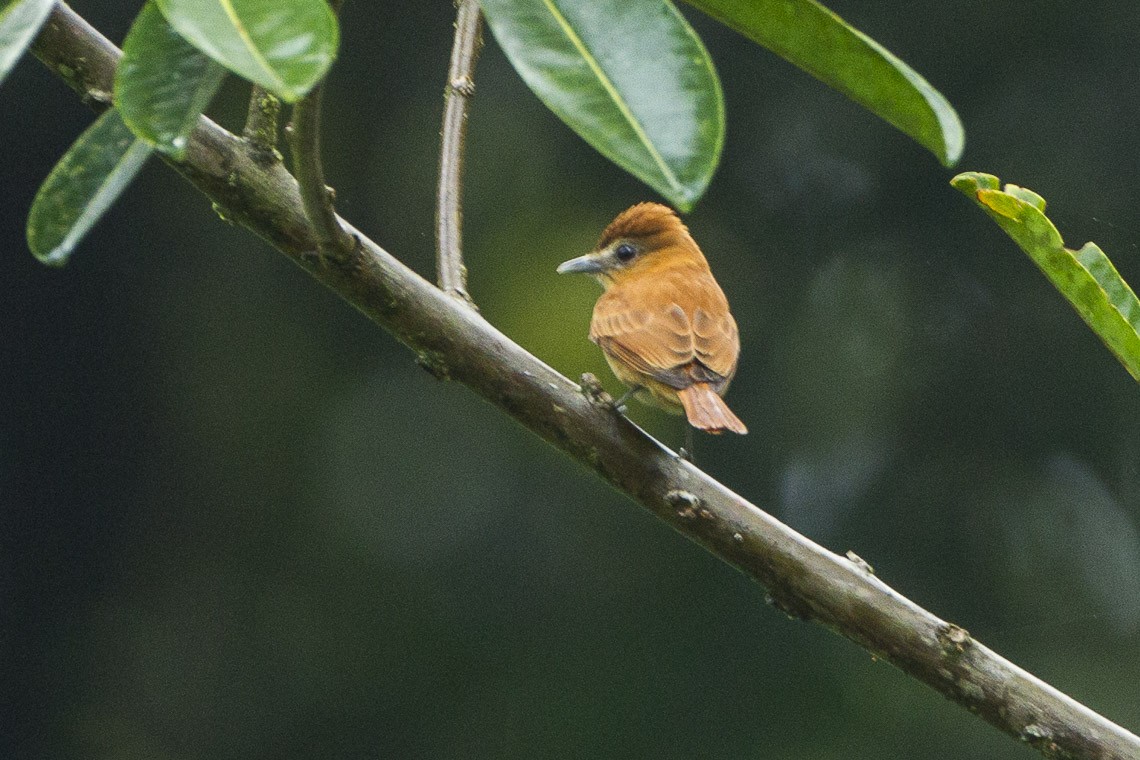Cinnamon Becard
A species of Becards Scientific name : Pachyramphus cinnamomeus Genus : Becards
Cinnamon Becard, A species of Becards
Botanical name: Pachyramphus cinnamomeus
Genus: Becards
Content
Description General Info
 Photo By Francesco Veronesi , used under CC-BY-SA-2.0 /Cropped and compressed from original
Photo By Francesco Veronesi , used under CC-BY-SA-2.0 /Cropped and compressed from original Description
The adult cinnamon becard is 5.5 in (14 cm) long and weighs 0.6–0.8 oz (17–22 g). It is rufous above and paler cinnamon below, with a grey bill and legs. Unlike other becards, the sexes are similar, but the young are brighter above and paler overall. Northern birds have a pale supercilium and dusky line from the bill to the eye, but the subspecies Pachyramphus cinnamomeus magdalenae west of the Andes shows more contrast, with a stronger supercilium and blackish loral line. The calls include high thin whistles. The males' song is a plaintive ascending dee dee dee dee dee dee de while the females' is a weaker deeeu dew dew, dew dew. 
Size
15 cm
Nest Placement
Tree
Feeding Habits
Cinnamon Becard feeds primarily on large insects and spiders, foraging in foliage. They also consume small berries, showcasing a varied diet. This bird employs active search tactics to locate prey, distinct in preferring arboreal hunting.
Habitat
Cinnamon Becard predominantly inhabits woodland and forest environments that feature a mix of edges, clearings, and secondary forests. This species is also adapted to thrive in diverse landscapes such as mangroves, riparian zones near water bodies, and plantation areas. A preference for habitats is evident in lowlands up to middle elevations ranging from sea level to 1500 meters, with a notable presence in humid, evergreen forests and semi-open woodlands across broad tropical regions.
Dite type
Insectivorous
General Info
Feeding Habits
Bird food type
Distribution Area
The cinnamon becard is a resident breeding species from south-eastern Mexico south to north-western Ecuador and north-western Venezuela. It was recently found to be far more common on the Amazonian slope of the Colombian Cordillera Oriental than previously believed. It occurs over a wide range of altitudes, from almost sea level to (albeit rarely) more than 5,000 ft (1,700 m) ASL; they prefer disturbed habitat like open woodland including forest edges and clearings, mangroves, and secondary forest e.g. dominated by Naked Albizia (Albizia carbonaria, Fabaceae). 
Species Status
Not globally threatened.
Scientific Classification
Phylum
Chordates Class
Birds Order
Perching birds Family
Cotingas Genus
Becards Species
Cinnamon Becard